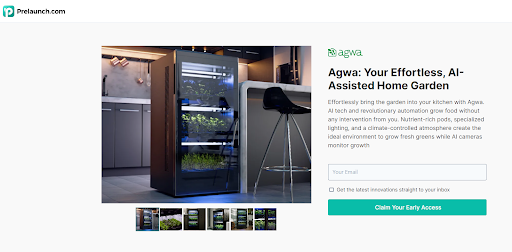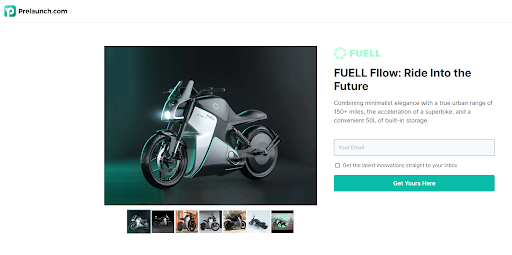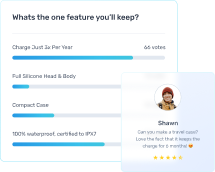Qualitative market research provides deep insights that quantitative data often overlooks. This comprehensive guide will explore the methods, applications, and tools of qualitative market research, helping market researchers, business owners, students, and marketing professionals understand its value and how to use it effectively.
What is Qualitative Market Research?
Have you ever wondered what goes on behind the scenes of your favorite product launch? Understanding consumer preferences goes beyond just numbers. Qualitative market research delves into the “why” and “how” behind consumer behavior, uncovering the rich tapestry of thoughts, feelings, and motivations that drive purchasing decisions.
Unlike quantitative research, which focuses on numbers and statistics, qualitative research is all about unstructured, in-depth exploration. Imagine it as having a conversation with your target audience, where you listen attentively and gain valuable insights into their perceptions, experiences, and needs.
Here’s a breakdown of the key characteristics of qualitative research:
- Focuses on “Why” and “How”: While quantitative research tells you “what” percentage of people prefer a certain feature, qualitative research helps you understand the reasons behind those preferences.
- Unstructured and Exploratory: Unlike surveys with fixed answer choices, qualitative research allows for open-ended discussions and discovery of unexpected themes.
- Smaller Sample Sizes: Qualitative research typically involves smaller, targeted groups, allowing for deeper dives into individual perspectives.
By employing various methods like focus groups, in-depth interviews, and even observing consumers in their natural environment, qualitative research provides invaluable insights for:
- Product Development: Understanding user needs and pain points to create products that resonate.
- Marketing and Advertising: Crafting compelling messages that target the emotional drivers behind consumer decisions.
- Brand Strategy: Building a strong brand identity that connects with your target audience on a deeper level.
In the next sections of this blog, we’ll explore the various qualitative research methods you can employ, along with practical applications and the tools available to streamline the research process.
Key Methods of Qualitative Research
Qualitative research offers a rich toolbox for uncovering the motivations and experiences of your target audience. Here’s a look at some of the most popular methods, along with examples of their applications:
In-Depth Interviews
Imagine having a focused conversation with a potential customer, where you delve into their thoughts and feelings about your product or service. In-depth interviews provide a personal and insightful way to gather rich data. These interviews are typically one-on-one, allowing you to explore nuances and follow up on interesting leads.
Applications: Understanding user experience with a new product prototype, exploring brand perception among existing customers.
Tools: Prelaunch is a concept validation platform that gives entrepreneurs the opportunity to ‘co-create’ with their audience by engaging in exactly these types of in-depth interviews. The platform is set up to schedule, host, analyze interviews conducted with a select group of folks who have already confirmed their purchase intent.
Focus Groups
Gather a small group of individuals who represent your target audience and guide a discussion around a specific topic. Focus groups allow you to observe group dynamics and witness how ideas and opinions are formed and challenged within a social setting.
Applications: Generating new product ideas, testing marketing messages, understanding customer needs within a specific demographic.
Tools: Online platforms like UserTesting or Lookback allow for remote focus groups with features like screen recording and live moderation. Prelaunch is also set up for these types of calls with options for one-on-one or group interviews. As your interview is recorded and stored in the platform’s database, summaries on what each participant has said is generated, as well as a transcript and other insights. What’s more, whereas other platforms are set up solely for focus groups, Prelaunch offers a more comprehensive approach that allows you to gather and analyze both qualitative and quantitative data.
Ethnographic Research
This immersive approach involves spending extended time with your target audience in their natural environment. Imagine observing a group of athletes to understand their training routines and equipment preferences. Ethnography provides a deep understanding of behaviors, habits, and cultural contexts.
Applications: Understanding customer journeys within a retail setting, uncovering unmet needs in a specific industry.
Tools: While ethnography is often low-tech, note-taking apps like Evernote or OneNote can be helpful for researchers to organize their observations.
Online Surveys with Open-Ended Questions
While surveys are often associated with quantitative research, incorporating open-ended questions allows you to gather qualitative data alongside quantitative metrics. This method is particularly useful for gathering initial insights from a larger sample size.
Applications: Understanding initial reactions to a new product concept, gauging customer satisfaction with existing services.
Tools: Survey platforms like SurveyMonkey or Google Forms offer features for creating open-ended questions and analyzing qualitative data. But there are also concept-validating platforms like Prelaunch that build quick surveys with targeted questions into their funnels for both cases when users decide to purchase a product. So, for those looking to kill many birds with one stone, setting up a landing page on Prelaunch and tracking engagement can provide you with a wealth of new data.
Text Analysis and Social Listening
The digital age provides a wealth of qualitative data in the form of online reviews, social media comments, and forum discussions. Text analysis tools can help you identify trends, themes, and sentiments within this data.
Applications: Understanding customer feedback on a recent marketing campaign and analyzing brand perception on social media.
Tools: Social listening platforms like Brandwatch or Sprout Social offer features for analyzing online conversations and brand mentions. Another useful tool to keep in mind is Prelaunch’s AI Market Research Assistant which analyzes what buyers on Amazon have to say about competitor products.
Remember, the most effective qualitative research often employs a combination of these methods. By triangulating data from different sources, you can build a comprehensive picture of your target audience and gain valuable insights to inform your business decisions.
Applications of Qualitative Market Research
Qualitative market research isn’t just about understanding the “why” – it’s about translating those insights into actionable strategies. Here’s how companies leverage qualitative research to achieve real-world results:
1. Product Development
Imagine a company developing a new fitness tracker. Through in-depth interviews with potential customers, they uncover a desire for a tracker that goes beyond just steps and heart rate. They learn that users crave features that track sleep quality and offer personalized workout recommendations. This qualitative research informs the product development process, leading to a more well-rounded fitness tracker that caters to the specific needs of the target audience.
2. Marketing and Advertising
A streaming service wants to launch a new original series but needs to understand what kind of content resonates with their audience. Focus groups with potential viewers reveal a hidden hunger for historical dramas with strong female leads. This insight allows the streaming service to tailor their marketing campaign, emphasizing the show’s historical setting and powerful female characters, ultimately leading to a more targeted and successful launch.
3. Brand Strategy
A sustainable clothing brand wants to solidify its position as an environmentally conscious company. Ethnographic research involving observing customer behavior at eco-friendly markets reveals a strong preference for brands that not only use recycled materials but also actively support environmental causes. This research informs the brand’s strategy, prompting them to partner with environmental organizations and highlight their social impact initiatives in their marketing efforts.
4. Customer Experience (CX) Improvement
A bank aims to improve customer satisfaction with their mobile app. Through online surveys with open-ended questions, they discover user frustrations with a complex login process and a lack of intuitive navigation. This feedback allows the bank to redesign their mobile app with a focus on user-friendliness and streamline the login process, ultimately leading to a more positive customer experience.
5. Innovation and New Product Ideas
A company that manufactures household cleaning products conducts focus groups to explore consumer cleaning habits. Surprisingly, participants express frustration with the harsh chemicals present in traditional cleaning solutions and a growing interest in natural cleaning alternatives. This qualitative research sparks a wave of innovation, leading the company to develop a new line of eco-friendly cleaning products that cater to this growing market demand.
By using qualitative research to get inside the minds of their customers, companies can develop data-driven strategies that resonate with their target audience and ultimately drive business success.
Advantages and Disadvantages of Qualitative Research
Qualitative research offers a powerful tool for understanding the “why” behind consumer behavior, but it’s important to acknowledge both its strengths and limitations. Here’s a breakdown of the advantages and disadvantages to consider when designing your research approach:
Advantages
- Rich and In-Depth Insights: Qualitative research delves deeper than surface-level responses, uncovering motivations, feelings, and thought processes that drive decision-making.
- Flexibility and Adaptability: Unlike rigid quantitative methods, qualitative research allows you to adapt your approach based on emerging themes and can explore unforeseen areas of interest.
- Understanding Context: By observing behaviors and conversations in natural settings, qualitative research provides valuable context to quantitative data, offering a more holistic picture of the research topic.
- Generating New Ideas: Qualitative research excels at sparking creativity and uncovering unexpected insights that can lead to innovative solutions and product ideas.
Disadvantages
- Limited Generalizability: Findings from qualitative research may not be applicable to a larger population, as sample sizes tend to be smaller.
- Subjectivity: The researcher’s interpretation and analysis of qualitative data can be influenced by personal biases. Mitigation strategies like member checking and triangulation are crucial.
- Time-Consuming: Data collection and analysis in qualitative research can be labor-intensive, requiring careful planning and dedicated resources.
- Difficulty in Quantifying Results: Qualitative data is not easily converted into numerical values, making it challenging to compare results across different studies.
Choosing the Right Method
The decision to use qualitative research often depends on your research objectives. If you’re aiming to understand the “what” and prevalence of certain behaviors, quantitative research might be a better choice. However, if you’re looking to explore the “why” and gain deeper insights into motivations and experiences, qualitative research offers a valuable approach.
In many cases, researchers employ a mixed-methods approach, combining qualitative and quantitative methods to leverage the strengths of both and address potential limitations.
Examples of Qualitative Market Research
Understanding how qualitative research is applied in real-world scenarios can provide valuable insights into its practical benefits and limitations. Let’s look at some examples of qualitative research conducted via the Prelaunch concept validation platform.
Agwa
Agwa, an AI-powered indoor gardening system designed for growing fresh greens at home, revealed surprising insights through Prelaunch analytics. Subscribers liked the compact size for easy placement under tables or in corners, but actual buyers preferred larger models for practical growing needs.
The qualitative market research also concluded that people want to buy it for the purpose of feeding their pet rabbits, guinea pigs. Surprisingly, people who enjoy fishing overlap with people who have an interest in the product. (This insight proves especially useful when thinking about running targeting ads.)

Fuell Fllow
Fuell Fllow, an electric motorcycle tailored for urban commuting, originally targeted young tech professionals concerned about environmental impact. However, Prelaunch revealed a higher conversion rate among retired individuals aged 60+ with a history of using gas motorbikes. These users were less focused on environmental concerns, viewing the motorcycle more as a recreational gadget than an eco-friendly commute solution.

Tools and Resources for Qualitative Research
The qualitative research toolbox is brimming with resources to streamline your data collection, analysis, and reporting processes. Here’s a look at some helpful tools and platforms:
Data Collection
- Online Scheduling Tools: Platforms like Calendly or Doodle can simplify scheduling interviews with participants, saving you time and effort.
- Remote Interviewing Platforms: Conducting qualitative research remotely is becoming increasingly common. Tools like UserTesting or Lookback facilitate online focus groups and interviews, often with features like screen recording and live moderation.
Data Analysis
- Transcription Services: Converting audio and video recordings of interviews and focus groups into text allows for easier analysis and identification of key themes. Services like Rev.com or Trint offer accurate and efficient transcription solutions.
- Text Analysis and Social Listening Tools: Platforms like Brandwatch or Sprout Social help analyze online conversations and social media mentions, providing valuable qualitative insights into brand perception and customer sentiment.
- Qualitative Data Analysis Software: Powerful tools like NVivo, ATLAS.ti, and Dedoose can help researchers organize, code, and analyze large volumes of qualitative data, identifying patterns and extracting deeper insights.
Survey Tools with Open-Ended Questions
While primarily used for quantitative research, survey tools like SurveyMonkey or Google Forms allow incorporating open-ended questions to gather qualitative data alongside quantitative metrics.
All-in-one Tool: Prelaunch
Prelaunch is a unique online platform that caters specifically to the needs of qualitative researchers in the pre-launch phase of product development (hence the name). Prelaunch offers a suite of tools designed to help you:
- Identify target customers: Conduct online surveys and screener questions to recruit the perfect participants for your research.
- Gather in-depth feedback: Facilitate online discussions, concept testing, and card sorting exercises to gain rich qualitative data.
- Analyze and report findings: Prelaunch provides tools to organize your data, identify key themes, and generate clear and concise reports.
Advantages of Prelaunch
- Streamlined Recruitment: Prelaunch’s built-in audience helps you find the right participants quickly and efficiently.
- Remote Research Capabilities: Conduct research online, eliminating geographical limitations and allowing participation from a wider range of demographics.
- User-Friendly Interface: The platform is designed for ease of use, allowing researchers of all experience levels to collect and analyze qualitative data effectively.
- Cost-Effective Solution: Prelaunch offers a subscription-based model, potentially reducing research costs compared to traditional methods.
Remember, the most effective research strategy often involves a combination of tools and resources. Choosing the right tools depends on your specific research objectives and budget.
Conclusion
Qualitative market research offers valuable insights into consumer behavior. By understanding the deeper motivations and emotions behind customer actions, businesses can make informed decisions and create effective marketing strategies. Whether you’re a researcher, business owner, student, or marketing professional, utilizing qualitative research methods provides a competitive edge in today’s dynamic business environment.
Explore the qualitative research methods and tools discussed in this guide to enhance your research strategies and gain deeper customer insights. The skills you gain can drive better decision-making and lead to greater business success.
Additional resources and tools are available for those interested in further exploring qualitative research. Whether you’re new to qualitative research or refining your techniques, there’s always something new to learn in this evolving field.




